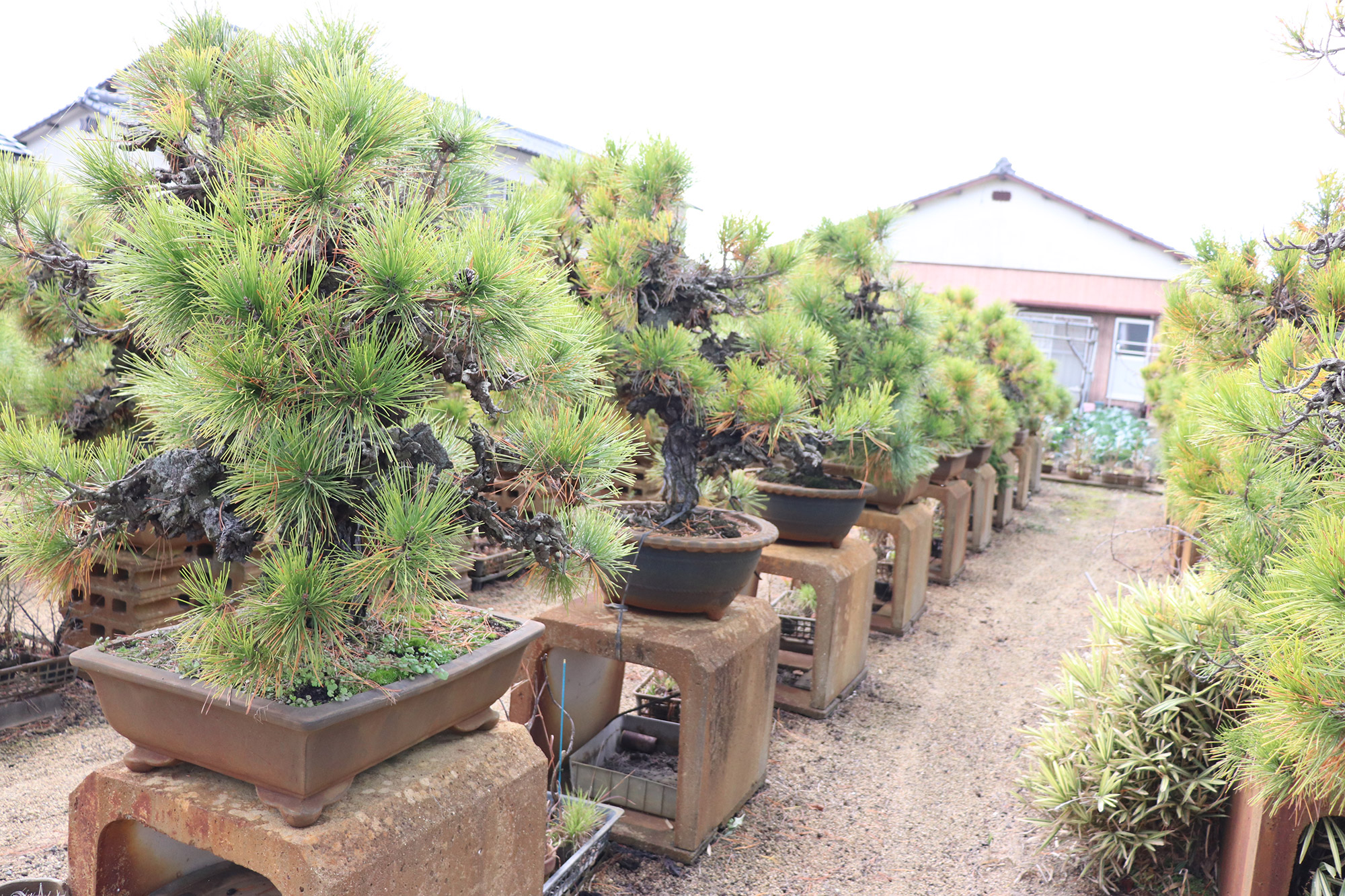Spread new species derived from mutation Senshoen
The celebrated three-generation garden of nishiki matsu
Senshoen is known as a bonsai garden that specializes in nishiki matsu and has existed for three generations, dating back to the grandfather of HASHIMOTO Masahiro, the current owner. HASHIMOTO entered the bonsai business when he was 19 years old, after graduating from high school.



HASHIMOTO Senji, his grandfather, liked nishiki matsu and performed grafting to increase the number of bonsai. During World War II, people were told to plant farm products to supplement food production. This deprived his grandfather of many nishiki matsu trees, who planted some of them in a mountain field for protection. After the war, he brought the nishiki matsu back to rebuild his business. If it were not for those nishiki matsu trees, HASHIMOTO said, the current business would not exist.
Currently, HASHIMOTO also works at the JA Kagawa Kokubunji Bonsai Center and maintains and sells the 3,000 pots received from registered members. The job provides more opportunities to listen directly to customers and encouraged him to also grow popular species.
Remarkable characteristics of nishiki matsu
One hundred-year-old nishiki matsu trees, dating back to the days of HASHIMOTO Senji, line the bonsai shelves.
Nishiki matsu is characterized by rough bark that cracks powerfully and its old tree-like appearance. The ideal form of bark is sanmaigawa, which means bark that spreads in three directions like a propeller when seen from above and the cracks of the bark are visible from all directions. The bark is densely colored with a thin layer of moss on its surface, as if praising its dignity.



HASHIMOTO performs jin on an area of the stem to create a new highlight. Jin involves peeling off the bark and polishing and trimming the core. The technique emphasizes a specific tree’s characteristics by making it look as if it were dying.
Mutation is a gift from God
Nishiki matsu was discovered in the Meiji period and is reportedly divided into about 40 species today. New species may emerge when a strange leaf occurs on a branch from a mutation or when a species undergoes breed improvement by being immersed in a chemical.
Senshoen has originated many different varieties: ogon has yellow leaves, koyo has light-colored and thick leaves, and kaito is characterized by yellow variegation in some of the leaves. Kaito was named after HASHIMOTO’s grandson.



Nishiki matsu is no stranger to changes in fashion. At one time, many people flocked to kyokko, a species in which the bark cracks early and can grow to be ready for sales quickly. However, a rumor spread that kyokko might easily allow insects to enter, causing its prices to drop. Senshoen treated suehiro, characterized by firm bark, as its staple product, which helped the bonsai garden to continue growing nishiki matsu.
“It is a big challenge to look ahead 10 to 20 years and do what no one else is doing. If you make good products, they will sell in any period,” said HASHIMOTO.
Mutation is a gift from God. HASHIMOTO is highly motivated to spread his nishiki matsu all over the world.
Senshoen

- ADDRESS
- 3047-1 Nii, Kokubunji-cho, Takamatsu City, Kagawa Prefecture
- TEL
- +81-87-874-9418

